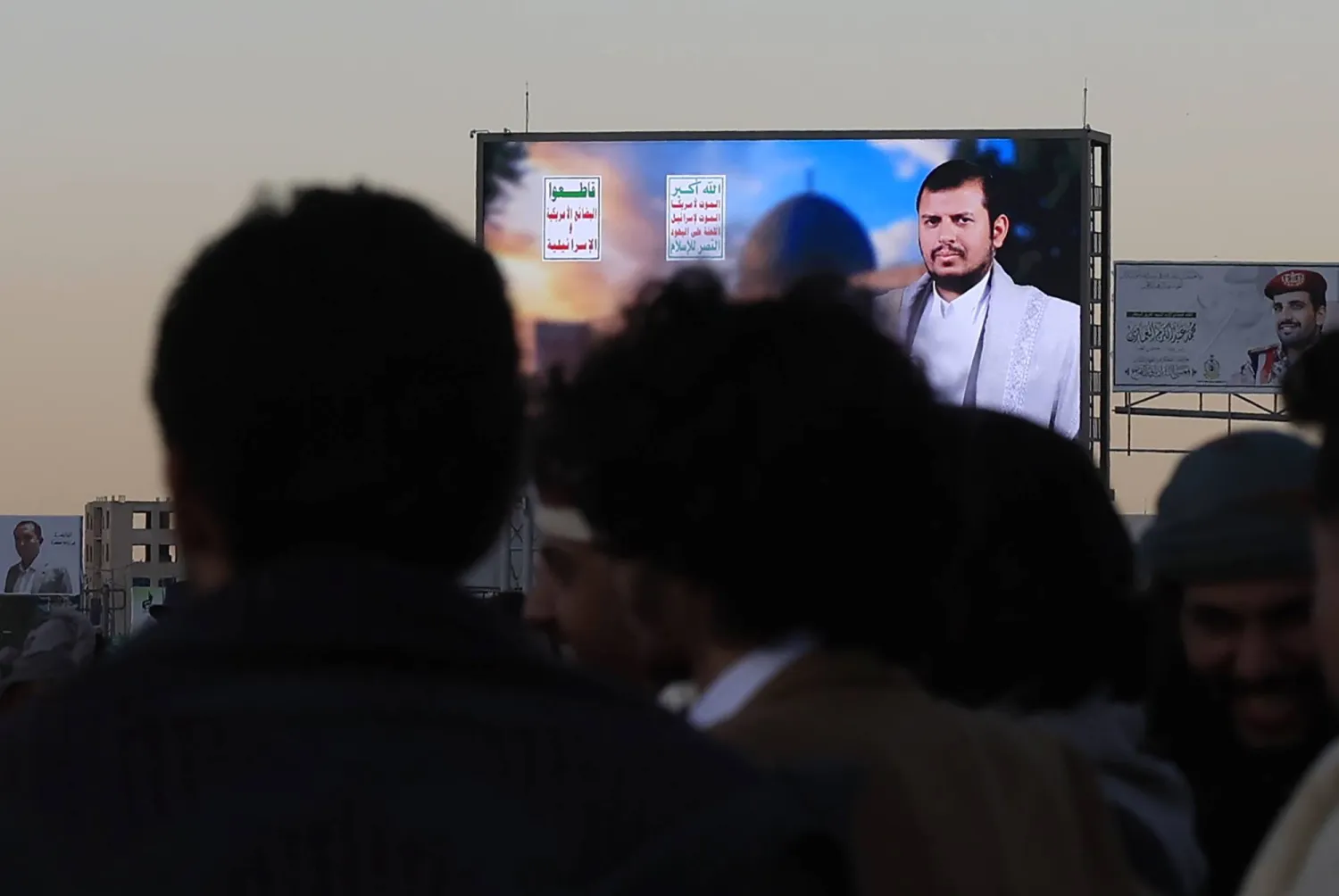Every year on February 14, the Saudis and Americans remember the first meeting that brought together King Abdulaziz bin Abdul Rahman with then US President Franklin Roosevelt in the Great Bitter Lake in the Suez Canal.
The historic meeting was known as the Quincy Summit or the Quincy Meeting, in reference to the USS Quincy battleship, on which the meeting was held, and upon which the Saudi-American relations have been consolidated to this day.
Before that famous encounter, King Abdulaziz had recovered in April 1913 Al-Ahsa from the Ottomans in a preemptive step to block any British-Ottoman agreement to share influence in the Arabian Peninsula. The Anglo-Ottoman agreement was signed in late July 1913, according to which the Ottoman Empire ceded the coast of the Persian Gulf to Britain.
King Abdulaziz had imposed himself on the regional map and put the forces competing for influence before a fait accompli. He was keen on his country’s sovereignty, which made him constantly express friendship and try to avoid confrontation despite his distaste for British policies.
He was also watching - before the outbreak of World War II - American commercial interest in the region, even though the United States did not have the actual political means and saw the Middle East as a British area of influence primarily. Yet, he kept his political options open.
While King Abdulaziz was laying the foundations of his foreign policy, he expressed his keenness to diversify his relations with various countries in a way that enhances Saudi interests. After entering the Hijaz in 1924, influential states began to recognize the nascent kingdom, starting with Russia in 1926 and followed by European countries.
King Abdulaziz tried to get the United States to recognize his state, but America was not willing at the time to move in this direction. The latter monitored the king’s international engagements, foreign relations and trade deals, most notably his agreement with Germany in 1929.
The US government assigned the assistant trade attaché in Alexandria, Ralph Chesebrough, to visit Saudi Arabia to explore the situation. Chesebrough visited Jeddah in the summer of 1930 and prepared a report entitled, “The Economic Sources and Commercial Activities of the Kingdom of Hejaz and Nejd and its Appendices.”
The report indicated that trade relations between the two countries were expected to grow and flourish, which encouraged the US government at the time to move towards establishing diplomatic relations between the two countries. The United States recognized the Kingdom in 1931.
In 1933, the Saudi government granted oil exploration concessions to Standard Oil of California (Socal). The agreement was signed at Khuzam Palace in Jeddah, Minister of Finance Sheikh Abdullah Al-Suleiman, representing the Saudi government, and lawyer Lloyd Hamilton, representing Socal. But commercial production did not start until 1938.
As World War II broke out in 1939, King Abdulaziz declared neutrality, despite his relations at the time with Britain and its military presence on its borders, and diplomatic relations with Germany.
Interest in Saudi Arabia and its King Abdulaziz bin Abdul Rahman increased after US advisers and policymakers realized that the Kingdom was a potential strategic value for the United States. They saw in it a help in solving some of the problems that President Franklin Roosevelt expected to occur in the region after the war. America provided aid to the Saudi government within the lend-lease program, which amounted to $99 million according to a Senate report.
In 1942, the United States appointed a chargé d’affaires in Jeddah. Since then, official contacts accelerated, and King Abdulaziz received a number of US envoys. The Kingdom of Saudi Arabia began to occupy a strategic importance in American foreign policy.
In 1944, the US appointed William Eddy at the head of its commission in Jeddah. Eddy was a naval colonel who had previously participated in the First and Second World Wars.
Eddy was born in Sidon to parents who work in missionaries. He grew up speaking Arabic and learning Arab culture and customs. After completing his studies at the prestigious Princeton University, he joined the Navy and enlisted in the government service. After his appointment in Jeddah, Eddy became one of the most prominent architects of Saudi-US relations and one of the witnesses to the historic meeting between King Abdulaziz and President Roosevelt.
Eddy, who passed away in Beirut in 1962, published a book in 1954 entitled, “F.D.R. Meets Ibn Saud”, in which he narrated the background of the preparations for the meeting.
Eddy recounted that while he was in Jeddah in February 1945, he was told that President Roosevelt, on his way back from the Yalta Conference—the agreement between the Soviet Union, Britain and the United States that discussed how to divide Germany and prosecute members of the Nazi Party and present them as war criminals—wanted to meet King Abdulaziz on board an American barge in the Bitter Lakes of the Suez Canal. Eddy was asked to arrange that meeting.
Arrangements were made and the USS Murphy sailed from Jeddah with King Abdulaziz on board, along with 48 companions.
At 10 a.m. on February 14, 1945 AD, the battleship arrived in the vicinity of the USS Quincy, which was carrying Roosevelt. King Abdulaziz, accompanied by the three princes and two ministers, disembarked, and crossed the bridge between the two ships to meet Roosevelt, who was sitting in his wheelchair on the Quincy. The two leaders spoke for an hour and a quarter before heading to lunch at 11.30.
Admiral Leahy (chief of staff and military advisor to the president) asked Eddy to escort King Abdulaziz in one elevator to the dining-room, while Leahy accompanied Roosevelt in the other.
Eddy recounted that he arrived with the King to the President’s suite, but Roosevelt did not show up! Leahy later said that the president stopped the elevator to smoke two cigarettes away from King Abdulaziz. In fact, Roosevelt was a heavy smoker, and yet he never smoked during his meeting with King Abdulaziz out of respect.
As soon as the two leaders met, charisma and diplomacy prevailed over the encounter. The two men were left to discuss the future and relations of their countries openly and transparently, Eddy’s book read.
After lunch, the meeting was limited to the two leaders only, with the presence of Eddy and Minister Youssef Yassin as translators. The talks lasted until 3:30 in the afternoon, which means that the total duration of the meeting extended over five hours. Then the king returned to the USS Murphy, which set sail.
Eddy sayid that he spent that night with Youssef Yassin to finish drafting the minutes of the talks. After they finished printing the minutes in both Arabic and English, the king signed the Arabic version, and on the following morning, February 15, 1945, Eddy flew to Alexandria, and presented the report to the president, who signed it without making any amendments.
King Abdulaziz asked Roosevelt for friendship and support, and noted that his country was not under occupation or mandate and that he wanted to remain independent.
After that, the president gave his pledge to King Abdulaziz - which he confirmed in a letter he sent on April 5, 1945, one week before his death - that he would not engage in any hostile acts against the Arabs, and that his government would not change its policy towards Palestine without prior consultations with the Arabs and Jews. For the King, the verbal assurances were then an agreement, and did not expect the sudden death of Roosevelt.
According to various sources, the historic meeting between the two leaders, apart from the Palestine, touched on the following issues: guaranteeing the sovereignty of the Kingdom, especially as the world war was still raging and King Abdulaziz did not disregard foreign ambitions in his country; developing the Saudi army and ensuring the independence of the Arab countries under colonialism, as well as the economic aspect relating to freedom of trade, services and the oil relations.
The meeting had political, humanitarian, economic and military dimensions. King Abdulaziz disposed of British influence, affirmed his position on the Palestinian issue, and relieved the monetary link to the pound sterling. Moreover, the Saudi Defense Agency became a ministry.
In 2020, the US State Department’s Office of Historians published an official document about the meeting, the first part of which corresponds to Eddy’s narration on the Palestinian issue, while the second part was about King Abdulaziz’s concern about the French policy towards Syria and Lebanon, whereas the US president affirmed America’s support for the independence of the two countries.
The meeting represented the largest Western-Islamic alliance, and symbolized the integration with the Islamic world with its resources, population, products, oil, strategic location and warm water ports.









